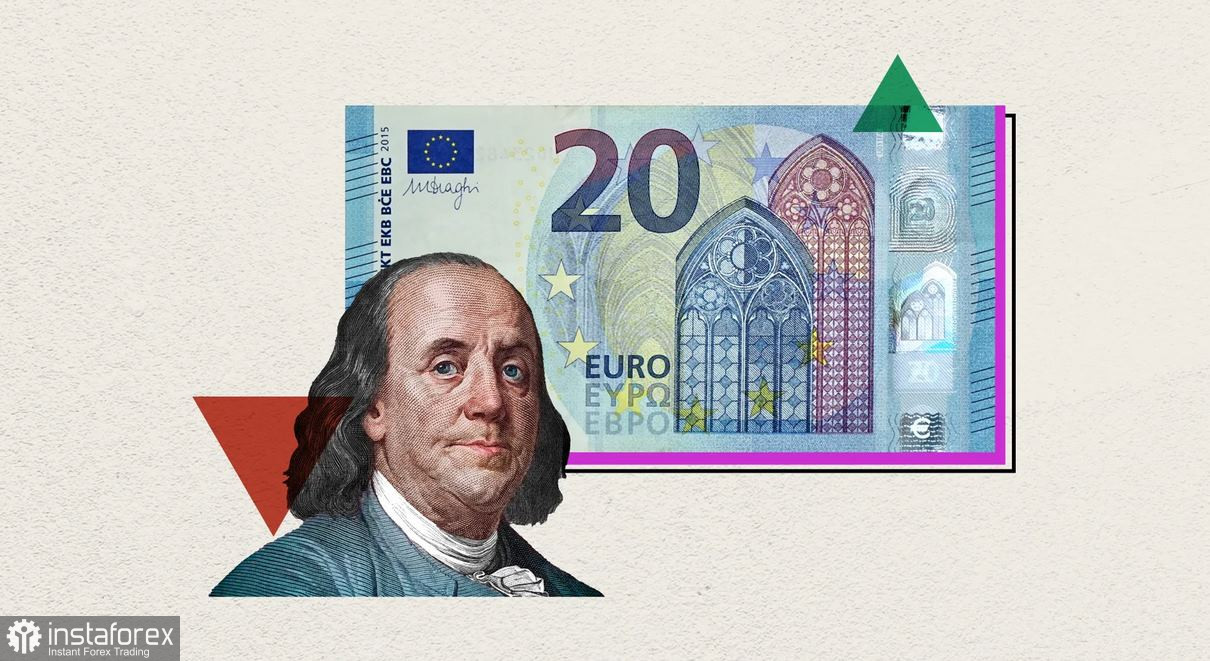The new trading week started relatively calm for the EUR/USD pair. During the Asian session on Monday, the dollar slightly strengthened, but only symbolically: during the European session, the pair not only returned to the opening level but also tested the 1.06 level. Overall, the market is quiet—a calm before the storm.
The main events of the current week will take place on Thursday and Friday, so traders are not risking opening large positions right now, neither in favor of the dollar nor against it. The scheduled events could indeed provoke a storm of volatility. On Thursday, the results of the October ECB meeting will be announced, and key data on the growth of the U.S. economy for the third quarter will be published. On Friday, we will learn about the dynamics of the most important inflation indicator, the core PCE index. On Tuesday and Wednesday, PMI and IFO indices will be published, but these releases will have limited impact on the pair.

It's worth noting that U.S. GDP growth data and the core PCE index can "revive" interest in the greenback if they resonate, so to speak: the U.S. economic growth report comes out at least at the expected level (a fairly strong growth of 4.3% is expected), and the core personal consumption expenditure index remains in the "green zone" (according to forecasts, the indicator is expected to continue to decline, to 3.7%). Such results can reinforce hawkish sentiments, but only in the context of the December meeting, not in November.
According to the CME FedWatch Tool, the probability of a rate hike in November is currently 0.0%. Furthermore, traders are allowing for a minimal (only 5%), but still a probability of a 25-point rate cut. The chances of maintaining the status quo are estimated at 95%. As for the December meeting, hawkish expectations have also weakened. The probability of a 25-point hike is only 24%. Note that up until Federal Reserve Chairman Jerome Powell's recent statements, this probability was approaching 50%.
If, however, the U.S. GDP growth data turns out to be in the "red zone" and the core PCE index comes out at least in line with forecasts, the likelihood of tightening monetary policy in December will drop to 8–10%, and the dollar will face additional pressure, allowing EUR/USD buyers to settle in the range of 1.0650–1.0750.
Under these circumstances, the only thing that could come to the dollar's aid from a fundamental perspective is a "black swan" event that intensifies risk-off sentiments and consequently increases traders' interest in the safe-haven dollar. There are certain prerequisites for the development of this scenario.
First and foremost, the situation in the Middle East continues to resemble a powder keg with a lit fuse. When it will "explode" is unknown, but sooner or later, the conflict will either escalate or be resolved. The information is contradictory.
According to the New York Times, Washington has "strongly requested" Israel to postpone a ground operation in the Gaza sector to hold negotiations for the release of hostages and enhance the protection of American facilities in the Middle East in case of attacks following the entry of Israeli troops into Gaza. Other information suggests that Israel may refrain from carrying out a ground operation, considering its potential consequences (escalation of the conflict, the risk of involving third parties, significant casualties, etc.).
In its current state, the Middle East conflict doesn't have a strong effect on the EUR/USD pair. However, in case of escalation, interest in the safe-haven dollar may increase.
Let's not forget about another "powder keg" called the "shutdown." Recall that at the end of September, after loud and protracted battles, Congress finally voted for temporary government financing until November 17. This decision essentially cost House Speaker Kevin McCarthy his position: far-right Republicans accused him of conspiring with Democrats, after which he resigned. Since then, the lower house of Congress has been without a leader, and it cannot pass new laws (including budget-related issues) until a new speaker is elected. Trump's ally, Republican Jim Jordan, failed to garner sufficient support after three rounds of voting and withdrew his candidacy.
Now, nine Republicans are vying for the position of speaker, but according to observers from The New York Times, "none of them possesses the authority usually required of a speaker." In other words, the temporary government financing in the United States expires in less than a month, and without approval of budget legislation, a shutdown awaits it. Meanwhile, the lower house of Congress is stuck in a "personnel deadlock."
In summary, it's worth noting that the EUR/USD pair continues to trade in the range of 1.0500 - 1.0630 (lower Bollinger Bands on H4 - upper Bollinger Bands on D1). It will be possible to talk about the sustainable development of an upward movement only when buyers firmly consolidates above the 1.0630 mark, opening the way to the 1.07 level.
After Powell's resonant statements, where he expressed doubts about the advisability of further tightening of monetary policy, the dollar is under background pressure. However, it remains afloat due to geopolitics and the growing threat of a shutdown. Therefore, considering long positions should only occur after buyers confidently overcome the aforementioned price barrier.





















